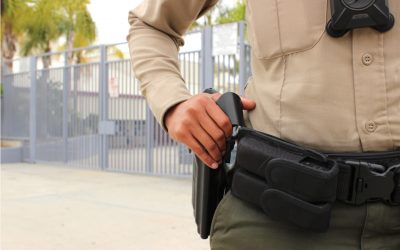Reimagining School Safety Resolution Toolkit
Karen Dolan | Cecelia Scheuer | Uma Nagarajan-Swenson
Introduction:
School districts around the country are reconsidering their relationship with local police departments and reimagining what real school safety means for students. They are doing so under the backdrop of severe declines in school funding and imminent budget cuts in the wake of the COVID-19 pandemic. In 2020, 62 superintendents from major school districts including New York City, Los Angeles, Chicago, and Miami wrote they’re bracing for 15 to 25 percent cuts in overall revenues going into next school year.
However, more and more US school districts, such as Minneapolis, Portland, Denver, Oakland, Phoenix, and Montgomery County, MD are moving forward with resolutions to cut ties with the police, which would reverse state-wide decisions over the last decade to ramp up funding for policing in schools. This comes as evidence shows harm to marginalized student populations without an increase in school safety, as well as the ways in which school resource officers, or SROs, contribute to the school-to-prison-pipeline rather than to safer educational environments.
The call is to reimagine school safety and invest funds currently spent on armed law enforcement into restorative practices, social and emotional development, health, and counseling.

Facts About School Police and the School-to-Prison-Pipeline
- A 2019 report shows that since the Parkland, Florida, and Santa Fe, Texas shootings, states have allocated an additional $965 million to law enforcement in schools.
- According to the 2019 ACLU report Cops and No Counselors, 1.7 million students are in schools with cops but no counselors; 3 million students attend schools with cops but no nurses; 6 million students attend schools with cops but no school psychologists, and 10 million students are in schools with cops but no social workers.
- Out of 2.6 million total out-of-school suspensions in the 2015-16 school year, 40.6 percent were Black students and 31.7 percent were white students. Within the public school system, Black students make up 15.4 percent and white students make up 48.9 percent. Thus, despite making up a much smaller proportion of the public school student population, Black students are four times more likely to be suspended and three and a half times more likely to be arrested in school than their white peers.
- Schools employing school police see increases in reported student offenses and school-based arrests by as much as 400 percent, according to a 2009 study.
- Researchers have found few differences between Black and White youth regarding common areas of arrest: they are roughly as likely to get into fights, carry weapons, steal property, use and sell controlled substances, and skip school. Data from 2016 shows that, despite these behavioral similarities, Black teenagers were 2.3 times more likely than white teenagers to be arrested for all delinquent offenses.
- As of 2018, Black students were three times more likely than non-Black students to attend a school with more security staff than mental health personnel.
- According to the ACLU in 2019, in North Carolina, Iowa, and Michigan, Black girls were more than 8 times as likely to be arrested than white girls. According to the same study, Black girls are arrested at 4 times the rate of white girls nationally.
- According to data collected from more than 95,500 schools in the 2013-14 school year, the average arrest rate in California schools where more than 80 percent of students receive free or reduced-price lunch is seven times the average arrest rate in schools where fewer than 20 percent of students receive free or reduced-price lunch.
The criminalization of Black, Brown, LGBTQ, and disabled students at the hands of SROs has fueled a school-to-prison-pipeline that follows students far beyond their youth. As educators begin to wake up to the grave emotional and developmental harm that putting law enforcement officers in schools causes, school districts now have the chance to reallocate their resources towards adequate mental health staff who can contribute to a more equitable, just, and meaningful future for all students.
Sample Resolution from Oakland
1000 Broadway, Suite 300, Oakland, CA 94607 510.879.8200 ph | www.ousd.org
Board Office Use: Legislative File Info.
File ID Number 20-1335
Introduction Date 06-10-2020
Enactment Number
Enactment Date
Memo
To: Board of Education
From: Shanthi Gonzales, Board Vice President
Roseann Torres, Board Member
Board Meeting Date: June 10, 2020; June 24, 2020
Subject: Elimination of Oakland Schools Police Department
Action: Approval by the Board of Education of Resolution No. 1920-0260 – George Floyd Resolution to Eliminate the Oakland Schools Police
Department
Background: The Oakland Unified School District employees its own police force. The Oakland Schools Police Department includes both sworn officers and non-sworn employees such as school safety officers.
Discussion: The proposed resolution would eliminate the Department and the sworn officers. It would direct the Superintendent to reallocate funds previously used for sworn police officers toward student support positions such as school-based social workers, psychologists,
restorative justice practitioners, or other mental or behavioral health professionals, as the budget supports, to meet the needs of students. It would also direct the Superintendent to launch, by no later than July 17, 2020, an inclusive, community-driven process – involving parents, students, teachers, school administrators, student support staff, the Black Organizing Project, and other community partners – for completing a revised District safety plan with strategies for enhancing student learning, safety, and well-being within the District.
Fiscal Impact: Net impact dependent on cost of additional positions or costs added, if any
Attachment: Resolution No. 1920-0260 – George Floyd Resolution to Eliminate the Oakland Schools Police Department
Oakland Unified School District
Board of Education
RESOLUTION NO. 1920-0260
George Floyd Resolution to Eliminate the Oakland Schools Police Department
WHEREAS, the Oakland Unified School District ( “District”) has an obligation to promote the healthy development of each one of its students, which includes protecting them from the impact of systemic racism and violence to the greatest extent possible while they are at school; and
WHEREAS, it has become clear that the District can no longer sit quietly an employ its own police force amid countless acts of violence, particularly against black men and boys; and
WHEREAS, in wake of the brutal murder of George Floyd in the city of Minneapolis by Minneapolis
Police Department officers on May 25, 2020 and in response to the local, national and international demands for justice to end anti-black racism and policing practices; and
WHEREAS, evidenced by school districts across the country, there are multiple resources and pathways to ensuring school safety that the District has already began employing such as Restorative Practices and Restorative Justice; and
WHEREAS, as a result of the persistent deaths of innocent Black citizens in the United States at the hands of police officers, the Minneapolis, Denver, Portland and Chowchilla school districts, along with others across the country, are terminating contracts with police departments for the policing of schools and, therefore, students; and
WHEREAS, it is no longer fiscally possible or financially sustainable to invest in the current structure of safety practices with a police department within the District; and
WHEREAS, the District has a long record of disproportionately suspending, expelling, involuntarily transferring and arresting Black male and female students, thereby involving them in the criminal justice system while students lose important time from classroom; and
WHEREAS, since the 2015- 16 School Year, Black students made up 26% of the enrollment and yet made up 73% of arrests, accounting for 3 out 4 of the arrests in our schools, and in the last four years there were over 9,000 calls for service to the police on students; and
WHEREAS, such a deeply embedded and institutionalized form of preemptive policing has extremely significant consequences, foreclosing opportunities toward graduation, college, and employment for Oakland’s Black youth, school policing is fundamentally undermining the economic and public health of the Black community by restricting access and opportunity; and
WHEREAS, throughout the 2013-2018 School Years, Oakland Unified School District spent over $9.3 million dollars on the Oakland Unified School District Police Department, excluding the unarmed school site security officers while, in the past three years, laying off 33 Restorative Justice Coordinators and only 3 School Police officers; and
WHEREAS, having police in school buildings, the District exposes Black students and all students of color, who comprise 90% of the student body in the District, to early police contact as a result of our police in and around schools, which can lead to higher chances of being criminalized, compared with the remaining 10% of students who are White; and
WHEREAS, the perpetuation of the school-to-prison pipeline is incompatible with our goal of creating safe, healthy, and equitable schools for all District students.
NOW, THEREFORE, BE IT RESOLVED that the Board of Education (the “Board”) directs the Superintendent to take the steps necessary to eliminate the Oakland Schools Police Department prior to the beginning of the 2020-21 school year, or as soon thereafter as legally permissible; and
BE IT FURTHER RESOLVED, that the Board directs the Superintendent to ensure that henceforth the District will be no longer employ law enforcement or armed security presence of any kind within District schools but may utilize the Oakland Police Department in emergency situations requiring law enforcement; and
BE IT FURTHER RESOLVED that the Board directs the Superintendent to reallocate funds previously used for sworn police officers toward student support positions such as school-based social workers, psychologists, restorative justice practitioners, or other mental or behavioral health professionals, as the budget supports, to meet the needs of students; and
BE IT FURTHER RESOLVED that the Board directs the Superintendent to launch, by no later than July 17, 2020, an inclusive, community-driven process – involving parents, students, teachers, school administrators, student support staff, the Black Organizing Project, and other community partners – for completing a revised District safety plan with strategies for enhancing student learning, safety, and wellbeing within the District; and
BE IT FURTHER RESOLVED that the Superintendent or her designee shall provide at least two reports to the Board during the 20-21 school year on the progress of the community-driven process in creation of a District safety plan, with adoption no later than December 31, 2020; and
BE IT FURTHER RESOLVED that this Resolution supersedes and voids the portion of Resolution No. 1920-0214, adopted by the Board on March 4, 2020, which directed the Superintendent to, among other things, “develop an alternative Safety Plan that could be put in place if the Board elected to eliminate all non-school site staff sworn officers of the Oakland Schools Police Department” and to present the alternative Safety Plan “to the Board no later than September 2020.”
CERTIFICATION
We hereby certify that the foregoing is a full, true and correct copy of a Resolution passed at a Regular
Meeting of the Board of Education of the Oakland Unified School District held on June 24, 2020.
Joday London, President, Board of Education | Kyla Johnson Trammell, Secretary, Board of Education
Here is the online petition, through Change.org used by Wake County, North Carolina. Other school districts have used a similar format. You can use this for a guide. It can be a vehicle for you to get your neighbors, lawmakers, educators, those with whom you might worship, other parents in your school district, and concerned residents involved in your efforts.
https://www.change.org/p/wake-county-school-board-remove-sros-from-wake-county-schools?utm_source=share_petition&utm_medium=custom_url&recruited_by_id=8f7b6430-53c5-11e6-a1ed-a7afd4b70fd4&use_react=false
Advancement Project List of Petitions: Take Action→ Sign These Petitions
https://advancementproject.org/resources/take-action-sign-these-policefreeschools-petitions/
- Daily Freeman, Kingston, NY

https://www.dailyfreeman.com/opinion/letter-money-spent-for-school-resource-officers-should-be-redirected/article_09a5b436-bd35-11ea-a567-ff041cdfda16.html - Editorial Board, Oregon Live, Portland, Oregon
https://www.oregonlive.com/opinion/2020/06/editorial-removing-police-from-schools-a-first-step-in-long-road-to-reform.html - Advancement Project Letter of Support https://advancementproject.org/news/advancement-project-national-office-statement-we-applaud-minneapolis-public-school-boards-decision-to-embrace-policefreeschools/
Restorative Justice: Several school districts have begun to experiment with alternative models of conflict resolution, such as Restorative Justice practices which foster safe environments and positive outcomes for students, especially for Black, Latinx, LGBTQ, and disabled youth.
Our 2018 report, “Students Under Siege” defines Restorative Justice practices as those that reject models of punitive discipline by seeking to repair harm that has been done by involving all stakeholders in the resolution rather than punishing an offender for breaking a law or a rule. This involves those who have committed harms to take accountability and to be involved in the healing process.  The goal of Restorative Justice is to heal and learn in a manner that engages all stakeholders through a facilitated dialogue process, from the student responsible for the harm caused, to the person harmed, to guardians and school staff. 2016 research demonstrated that the focus on social and emotional growth rather than punishment through Restorative Justice practices has reduced suspensions, expulsions, and even referrals to the juvenile legal system due to declining recidivism rates in school districts that have implemented this model.
The goal of Restorative Justice is to heal and learn in a manner that engages all stakeholders through a facilitated dialogue process, from the student responsible for the harm caused, to the person harmed, to guardians and school staff. 2016 research demonstrated that the focus on social and emotional growth rather than punishment through Restorative Justice practices has reduced suspensions, expulsions, and even referrals to the juvenile legal system due to declining recidivism rates in school districts that have implemented this model.
A 2016 study by the University of Illinois examining the outcomes of a Restorative Justice Circle program adopted by a large urban high school in the Southeast United States found that the circle resulted in overwhelmingly positive outcomes for both students and faculty. Students discussed how they used the circle process as their preferred method of dealing with conflicts and taking ownership because it was better than the method they turned to before, which was physical fighting. In addition, the study found that the Restorative Justice Circles interrupted the school’s pattern of referring students to law enforcement, improved relationships between students and staff, prevented destructive ways of engaging conflict, and conducted meaningful dialogue.
Social, Emotional, Academic Development (SEAD) and Social and Emotional Learning (SEL): Another set of resources that districts can utilize alongside of Restorative Practices are known as “Social, Emotional, and Academic Development” (SEAD) and “Social and Emotional Learning” (SEL). SEAD is “the integration of social and emotional development with academic learning in K-12 education,” according to the Aspen Institute. Decades of research have shown that not only is SEAD central to learning, a study from 2015 showed that it also results in significant benefits for students and society, including higher test scores, graduation rates, and post-secondary enrollment; reduced rates of delinquency; improved long-term employment, health, and civic engagement outcomes; and reduced rates of anxiety and depression.
As defined in our 2018 “Students Under Siege” report, “SEL approaches learning in a way that recognizes that students learn through social and emotional connections to family, community, peers, mentors, and teachers.” It has measured significant positive impacts on outcomes, as a 2011 study of over 270,000 kindergarten through high school students involved in 213 SEL programs in school showed an 11 percentile point increase in achievement as measured by grades in specific subjects and performance on standardized tests, in addition to improved attitudes and behavior.
Organizations
Reports
Cops and No Counselors, ACLU
We Came to Learn, The Advancement Project
The Data Gap: School Policing in Louisiana, Southern Poverty Law Center
Crime, Violence, Discipline, and Safety in U.S. Public Schools, National Center for Education Statistics
Bullies in Blue, ACLU
Two Billion Dollars Later: Executive Summary, Strategies for Youth
News Articles
- Berkeleyside, Berkeley, California
- StarTribune, Minneapolis, Minnesota
- The Washington Post, Washington, D.C.
- CBS Denver, Denver, Colorado
- KING5, Seattle, Washington
- The Cap Times, Madison, Wisconsin
- Detroit Free Press, Detroit, Michigan
- The Morning Call, Allentown, Pennsylvania
- Oregon Live, Portland, Oregon







